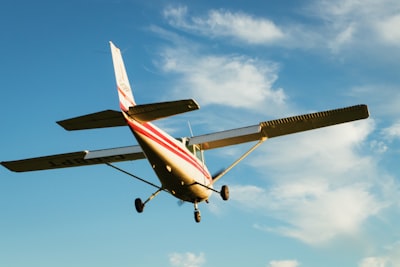Overview
A crosswind landing is a maneuver performed by pilots of fixed-wing aircraft when the aircraft lands in conditions where the wind direction is not aligned with the runway. This situation poses particular challenges and requires specific techniques to ensure a safe touchdown.
Causes and Risks
Crosswinds occur when winds blow at an angle to the runway, rather than directly along its length. They can be caused by normal meteorological phenomena, such as weather systems or local terrain features. Crosswind conditions are considered a standard hazard in aviation, and they can increase the risk of incidents such as runway excursions, hard landings, or the aircraft landing with a banked (tilted) attitude.
Techniques for Crosswind Landing
Pilots use several techniques to manage crosswind landings:
- Sideslip (Wing Low) Method: The pilot lowers the upwind wing and uses opposite rudder to keep the aircraft nose aligned with the runway.
- Crab Method: The aircraft is flown toward the runway with a crab angle (nose pointed into the wind), and just before touchdown, the aircraft is de-crabbed to align with the runway.
- Combination Method: Often, pilots use a combination of both techniques, crabbing on approach and transitioning to a sideslip just before landing.
Aircraft Limits and Certification
Every aircraft type has published crosswind limits for both takeoff and landing, based on manufacturer and aviation authority certifications. Exceeding these limits is not permissible in normal operations, as it could compromise safety.
Pilot Training and Safety
Training for crosswind landings is a key component of pilot education, from private pilot to commercial airline training. Simulator sessions and checkrides often include crosswind scenarios. Airlines also issue specific operational procedures for such conditions.
Handling Irregular Landings
In some situations, strong or gusty crosswinds can lead to irregular or 'tilted' (banked) landings. Proper pilot response and adherence to standard operating procedures generally ensure passenger safety. Events such as noticeable tilting on landing are typically investigated internally by airline management and reported as part of routine safety oversight.
This article was inspired by the headline: 'Pesawat Batik Air Mendarat Miring, Ini Kata Manajemen - Kompas.com'.

Comments
No comments yet. Be the first to comment!